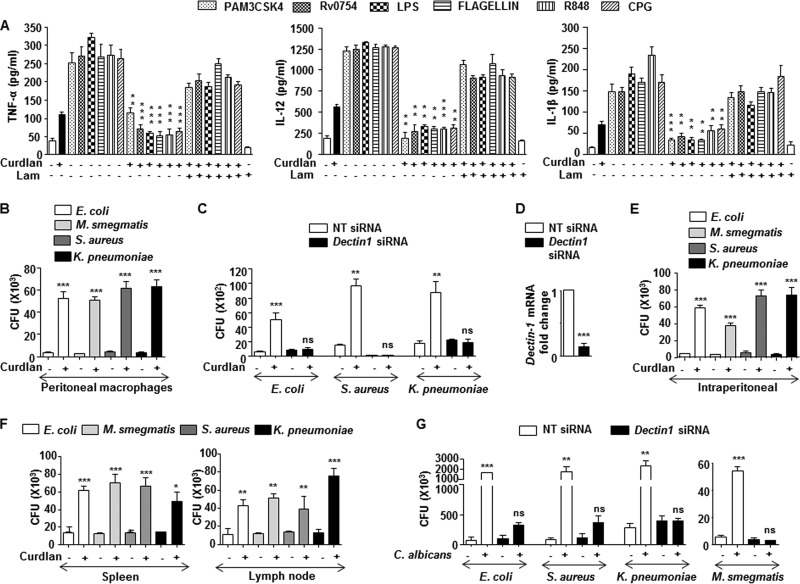FIG 2.
Interception of protective TLR-induced cytokines by dectin-1 engagement favors bacterial survival. (A) Mouse macrophages from C57BL/6J mice were treated with dectin-1 ligand, curdlan (100 μg/ml), for 6 h, followed by treatment with TLR ligands for an additional 18 h in the presence or absence of Lam. Lam treatment alone served as a control. Cell-free supernatants were analyzed for TNF-α, IL-12, and IL-1β by ELISA. (B and C) Mouse peritoneal macrophages (B) or nontargeting (NT) or Dectin-1 siRNA-transfected RAW 264.7 macrophages (C) were treated with curdlan for 6 h followed by infection with the indicated bacteria at an MOI of 1:10 for 18 h. Cells were lysed and enumerated for bacterial CFU. (D) Validation of Dectin-1 siRNA action in RAW 264.7 cells. (E) Intraperitoneal injection of mice with curdlan for 6 h followed by intraperitoneal challenge with the indicated bacteria (1 × 106 CFU) for 18 h. Peritoneal macrophages were isolated and enumerated for bacterial CFU. (F) Intravenous infusion of mice with curdlan for 6 h followed by intravenous challenge of mice with the indicated bacteria (1 × 106 CFU) for 18 h. Spleen and lymph nodes were isolated and enumerated for bacterial CFU. (G) RAW 264.7 cells transiently transfected with NT or Dectin-1 siRNA were infected with C. albicans for 6 h prior to 18 h of infection with the indicated bacteria. Cells were lysed and enumerated for bacterial CFU. All data represent the means ± SEM from 3 independent experiments. *, P < 0.05; **, P < 0.005; ***, P < 0.001; ns, not significant.

